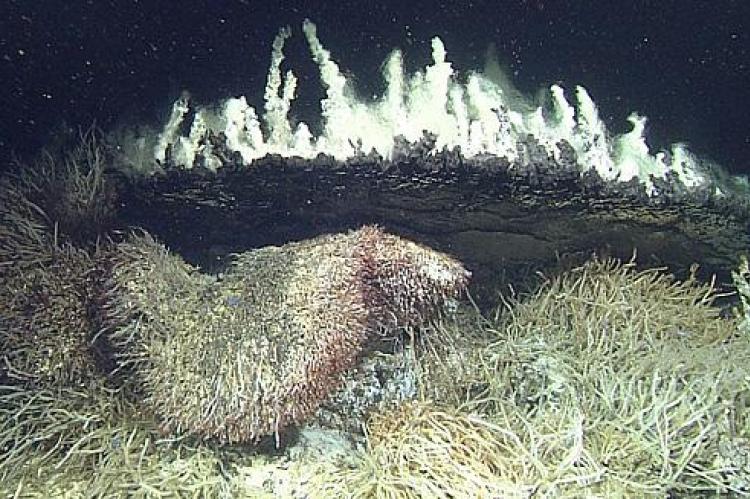Why neighboring hydrothermal vents may host different animal communities
A new study in the Proceedings of the Royal Society B suggests possible reasons why two neighboring hydrothermal vents that are just 75 kilometers apart host different animal communities.
In 2012, scientists from the Monterey Bay Aquarium Research Institute (MBARI) discovered a hydrothermal vent field along the Alarcón Rise at the southern end of the Gulf of California. Three years later, another vent field was discovered in the Pescadero Basin, 75 kilometers to the north.
After analyzing water samples, video surveys and the organisms they collected, the team concluded that the two vent fields hosted radically different animal communities, despite their physical proximity. In fact, out of 61 animal species, they had only seven species in common.
The two vents are geologically different. Young lava covers the seafloor along the Alarcón Rise. The hot fluids raising out of the vents are rich in metal sulfides that form dark, crumbly chimneys known as “black smokers.” In contrast, the fluid being emitted from the vents in Pescadero Basin contain very little sulfide and have to pass through thick layers of mud. It forms large carbonate chimneys streaked with dark oily hydrocarbons.
This suggests that local geology and chemistry of the vent fluid are integral in determining the composition of vent communities. This contradicts a common assumption that neighboring habitats would host similar communities.
Lead author Shana Goffredi, an MBARI adjunct and associate professor at Occidental College, explained, "Just like human cities, the community that forms in a particular area depends not only on who arrives at that location, but also whether the underlying resources are suitable for their success. Variation in these resources, whether physical or chemical, contributes greatly to the diversity of the region, which is important for community stability."
The team, led by scientists from MBARI, comprised scientists from Mexico, Canada, Russia, and Germany.





























